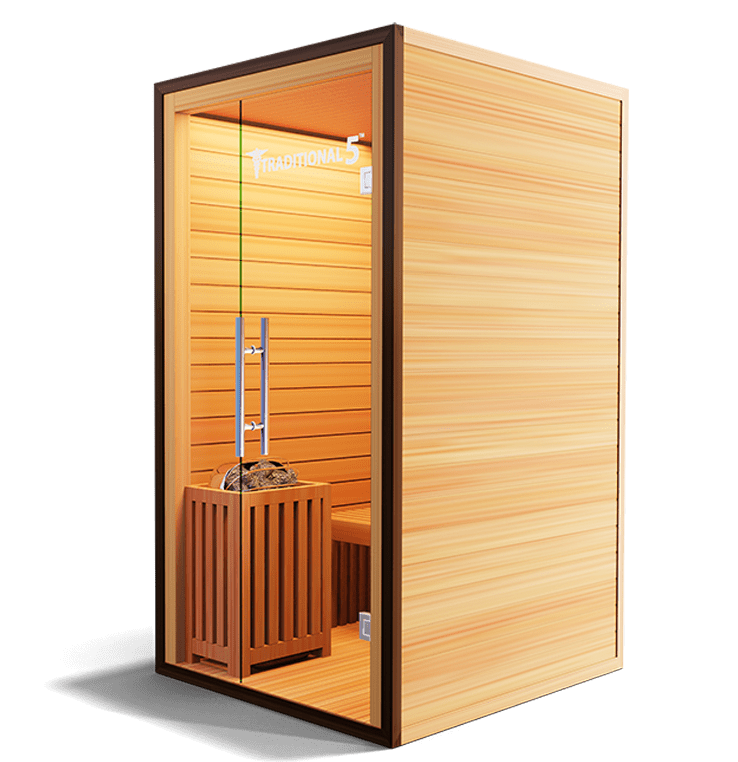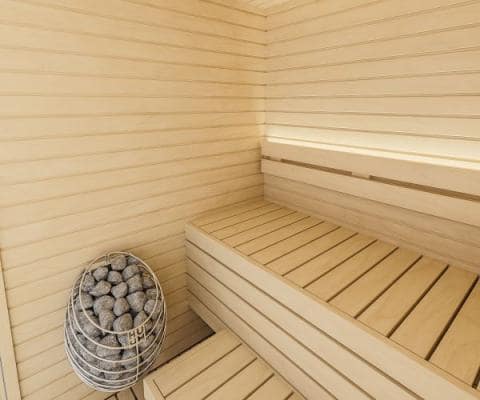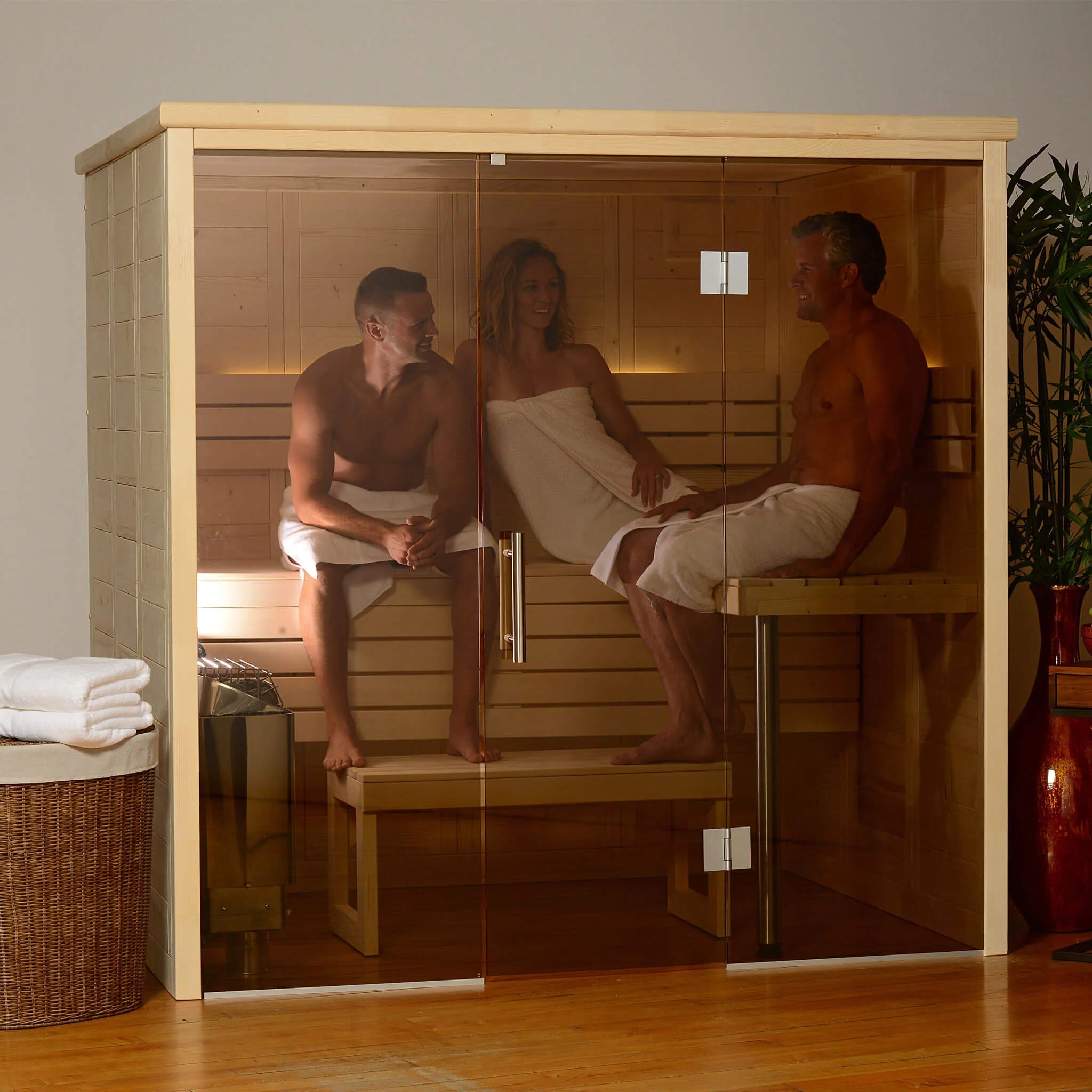All about Traditional Sauna
All about Traditional Sauna
Blog Article
Unknown Facts About Traditional Sauna
Table of ContentsTraditional Sauna Fundamentals ExplainedTraditional Sauna Can Be Fun For AnyoneThe Ultimate Guide To Traditional SaunaNot known Factual Statements About Traditional Sauna Not known Facts About Traditional Sauna
Most of the weight lost in a sauna is water loss and is re-gained upon rehydrating. Without a question sauna can be an important part of a healthy and balanced weight loss program. To check out the differences in between conventional and IR saunas, I will divide these into verifiable, theoretical, and fabricated differences.Thus, the best factor in the saunawhich goes to the ceiling directly above the sauna heateris typically in between 185 and 190 F. Claims that a standard sauna exceeds 200 F is merely not real and not suitable for electrical saunas marketed in the United States. The temperature for a far-infrared sauna is generally set in between 120 and 140 F; nevertheless, unlike the standard sauna, the goal in and IR area is not to accomplish a heat.
As a result of this, the temperature distinction is almost unnecessary, because extreme sweating causes both sauna kinds, but the approach of heating the body is various. In an IR sauna the bather will certainly really feel warm and will sweat profusely, however at much lower temperatures (Traditional Sauna). Therefore, if the goal is to invest longer amount of times in the sauna, the IR sauna is an excellent selection
When a traditional sauna has been properly heated up, the sauna wall surfaces are cozy, the air temperature has accomplished set temperature level and the rocks are incredibly heated. As an intriguing side note, the heated walls and the rocks are discharging far-infrared warm, incorporated with the warmed air, to develop an "covering warmth".
The 25-Second Trick For Traditional Sauna

When the heat is accomplished, the elements cycle on and off to preserve the high temperature level. A lot of typical sauna customers take pleasure in pouring water over the rocks to develop steam to elevate sauna moisture degrees. The benefits of putting water over the rocks consist of: making the area much more comfy, dampening the nasal passages, and enabling the use of aromatherapy by mixing essential oils with the water.

When the energy goes into the body, it causes the body temperature level to increase and eventually results in sweat. In an infrared sauna it is essential for the emitters/heaters to remain on nearly constantly. Since there is no mass of rocks to retain warmth, the sauna will cool down if the emitters turned off.
As mentioned over, the sauna bather in an infrared area wishes to place himself before operating emitters to obtain maximum gain from the warmth. The heating time for the two areas can be really different, relying on exactly how the spaces are used. For a traditional sauna, a bather should permit 30-40 minutes for the space to accomplish a desired temperature level and to correctly pre-heat the rocks.
How Traditional Sauna can Save You Time, Stress, and Money.
A well created sauna will normally achieve a temperature level of 150-160 F in concerning 30-40 minutes. For hotter temperatures, the area may our website need to warm for a longer duration. Once the room attains set temperature, the heating unit will cycle on and off, typically operating concerning 50% of the moment. The insulated wall surfaces and the heated rocks will certainly maintain the area hot and at stable temperature levels.

Typical saunas tend to be bigger (thus utilize even more electricity) than infrared saunas, although conventional saunas are definitely offered in one and 2 person sizes too. For a two-person typical sauna, 5x6 or 5x7 size is most popular. The leading bench can pleasantly seat two or three individuals and is likewise long enough to lie down throughout the sauna session.
Traditional Sauna Fundamentals Explained
The typical price per kWH of power in the U.S. is about $0.11, so a 4.5 kW heating system will certainly cost around $.50 to run for one hour, if the heating system runs continuously for one hour. Typically a sauna heater will certainly compete 75% of the first hour and 50% of subsequent hours on given that the aspects cycle once the set temperature is achieved.

There is a hardly ever reviewed distinction in the social experience in between the two rooms. While our culture has shed a few of the social advantage of the conventional sauna experience, it can be very socially gratifying (Traditional Sauna). From household time in the sauna, to heart-felt discussions with better halves, to sauna partiesthe standard sauna experience can bring about intimate mingling
7 Easy Facts About Traditional Sauna Shown
Many greater end infrared spaces consist of colored light treatment, noise systems and full-glass fronts.
Report this page